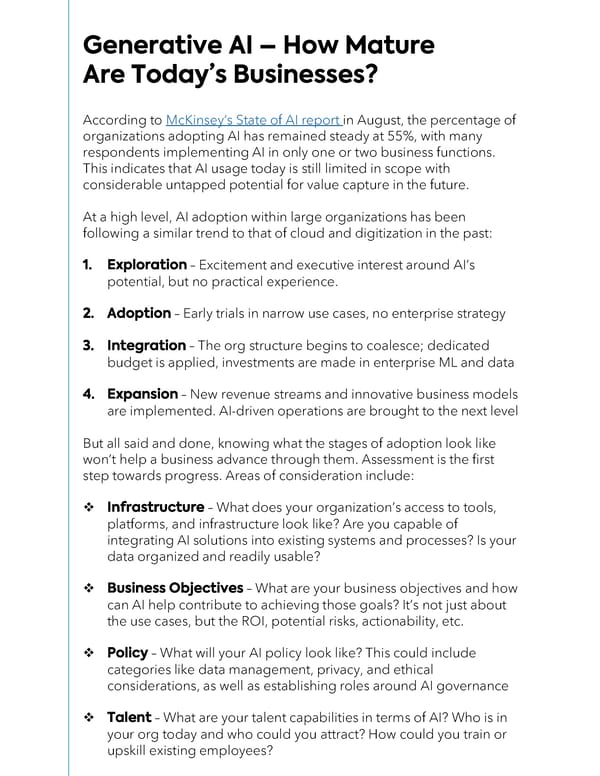According to McKinsey’s State of AI report in August, the percentage of organizations adopting AI has remained steady at 55%, with many respondents implementing AI in only one or two business functions. This indicates that AI usage today is still limited in scope with considerable untapped potential for value capture in the future. At a high level, AI adoption within large organizations has been following a similar trend to that of cloud and digitization in the past: – Excitement and executive interest around AI’s potential, but no practical experience. – Early trials in narrow use cases, no enterprise strategy – The org structure begins to coalesce; dedicated budget is applied, investments are made in enterprise ML and data – New revenue streams and innovative business models are implemented. AI-driven operations are brought to the next level But all said and done, knowing what the stages of adoption look like won’t help a business advance through them. Assessment is the first step towards progress. Areas of consideration include: – What does your organization’s access to tools, platforms, and infrastructure look like? Are you capable of integrating AI solutions into existing systems and processes? Is your data organized and readily usable? – What are your business objectives and how can AI help contribute to achieving those goals? It’s not just about the use cases, but the ROI, potential risks, actionability, etc. – What will your AI policy look like? This could include categories like data management, privacy, and ethical considerations, as well as establishing roles around AI governance – What are your talent capabilities in terms of AI? Who is in your org today and who could you attract? How could you train or upskill existing employees?
 2024 IT Priorities and Adoption of Gen AI Page 6 Page 8
2024 IT Priorities and Adoption of Gen AI Page 6 Page 8